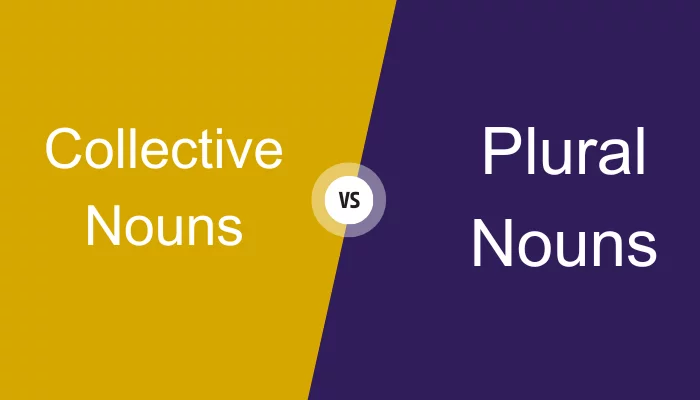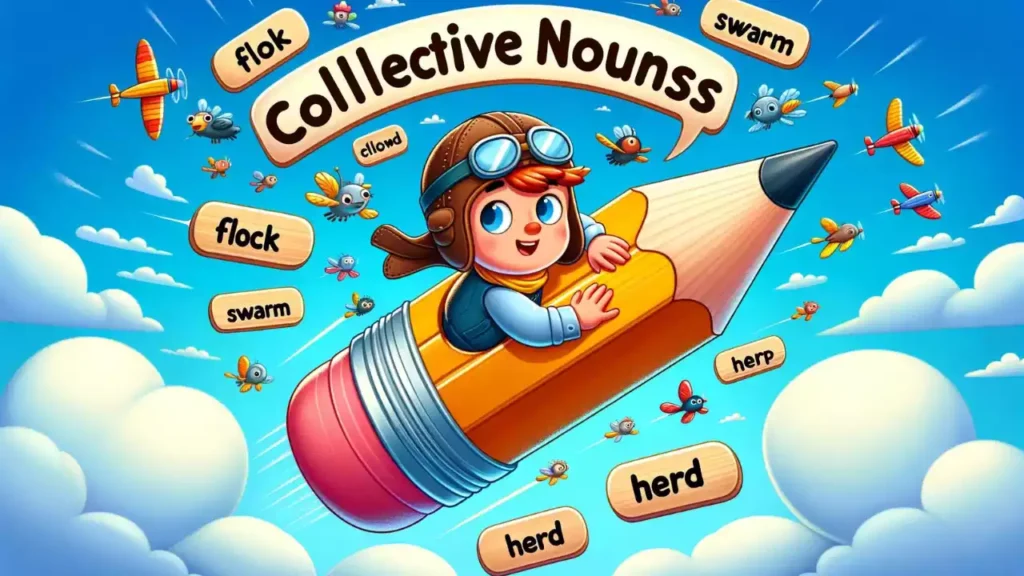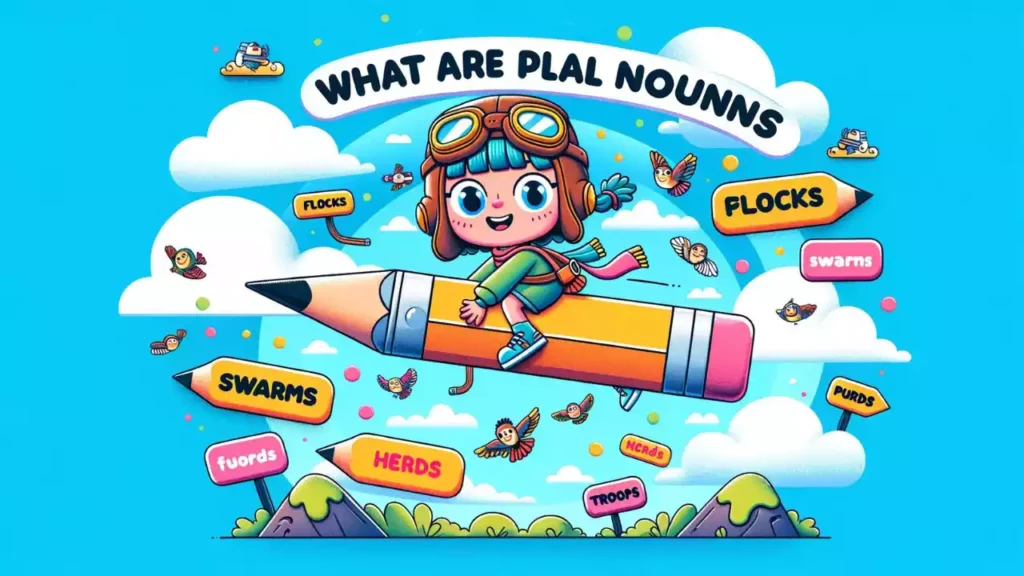Collective Nouns and Plural Nouns: Clarifying the Distinctions

The intricate rules of grammar allow the English language to convey nuanced meaning but some of those complexities can also trip us up. Collective nouns and plural nouns – though similar on first glance have key differences that impact how we communicate ideas. At times writers will use these two types of nouns incorrectly, leading to confusion for readers or muddying the writer’s intended message. In this article we will not only differentiate between collective and plural nouns but also explore vivid examples of each and discuss why mastering this grammar concept matters for eloquent self-expression. By peering at noun types through an illuminating lens collective and plural distinctions that once seemed fuzzy will suddenly snap into sharp focus. You’ll gain the understanding to employ nouns with precision and grace allowing your ideas to shine clearly in writing or speech without being obscured by unintended meanings. So read on to unlock a richer comprehension of both collective groups and plural individuals and how to aptly convey either in our dynamic English language.
What is a Collective Noun?

A collective noun is a noun that names a group of people animals or things as if that group were a single object. For example, team, jury, family, orchestra and class are collective nouns because even though they refer to multiple individuals those individuals are considered as one unified group. A collective noun contrasts with a plural noun which names multiple objects as separate individuals rather than as a whole (for example teams or families). The key purpose of a collective noun is to refer to multiple entities simultaneously as one singular cohesive unit. Using a collective noun signifies that the individuals act together in unison, as one body even if in reality the individuals in the group may act in diverse independent ways. Understanding this basic singular treatment of a collective whole is essential for properly utilizing collective nouns in grammar and communication.
Examples of Collective Nouns
Collective nouns represent a wide variety of groupings. Here are some common collective nouns and what they describe:
| Collective Noun | Designates/Describes |
|---|---|
| Team | A group of people working together towards a common goal in sports, work, etc. |
| Jury | A group of people who decide the verdict in a trial |
| Family | A group of people related by blood, marriage, adoption, etc. |
| Orchestra | A group of musicians who play instruments together |
| Class | A group of students learning together |
| Fleet | A group of vehicles (ships, aircraft, cars, etc.) |
| Gaggle | A group of geese |
| School | A group of fish |
| Murder | A group of crows |
| Pack | A group of wolves or dogs |
| Pride | A group of lions |
| Herd | A group of animals like cattle, zebra, deer etc. |
As shown in the examples collective nouns name a wide range of groups from formal organizations like juries to family units animal groupings and more. But they all share the quality of considering multifaceted groups as singular cohesive entities. This distinguishes collectives from plural nouns like teams or families which enumerate multiple separate groups rather than one whole. The collective noun adjustment allows us to conceptually grasp collections of individuals as unified.
Collective Nouns in Sentences
To understand collective noun usage further lets examine some example sentences:
| Collective Noun | Example Sentence |
|---|---|
| Jury | The jury reaches its verdict after days of deliberation. |
| Fleet | The fleet is sailing across the ocean to join the naval blockade. |
| Family | My family has lived in this town for five generations. |
| Orchestra | When the orchestra takes a bow at the concert finale the audience erupts in thunderous applause. |
| Herd | The herd travels 50 miles a day in search of water and grazing during the migration. |
In these examples the collective nouns (jury, fleet, family, orchestra, herd) all function as singular nouns rather than plural ones. This allows:
- Use of the singular conjugation of the verb attached to the collective (reaches, is sailing, has lived, takes, travels)
- Use of singular pronouns like its, its, my rather than plural like their or our.
- Referring to the collection as one coherent group rather than disconnected individuals
So collectives consolidate multifaceted groups into unified wholes. Compare a collective like The orchestra applauds the conductor’s leadership to a plural version like The orchestras applaud the conductors leadership the differences in meaning are evident.
What are Plural Nouns?

Plural nouns refer to more than one person, animal, place, thing, idea or instance of something. For example: students, dogs, cities, desks, opinions, events. They differ from singular nouns like student or dog that reference just one individual entity.
The key purpose of plural nouns is to shift focus from a single thing to indicate multiplicity grammatically and conceptually multiplying something rather than viewing it as unified. This contrasts collective nouns which group together multiple entities into one singular concept.
Properly using plural nouns involves employing:
- An -s or other plural ending (students, desks, mice)
- Plural pronouns like they, them, these.
- Plural verbs like are, have, work.
So in essence plural nouns multiply and enumerate separate individuals rather than consolidate a collective whole. This core denotation of multiplicity defines the function of nouns in their plural form.
Examples of Plural Nouns
Plural nouns arise all over language in diverse contexts. Lets look at some common scenarios in which plural nouns are used and examples:
In writing plural nouns allow authors to refer to multiplicities rather than just singular entities. For example, an author can discuss multiple students and schools rather than just one student or school.
Likewise, plural nouns enable talking about varieties of groups and instances rather than restrictive singular versions. For example, one can contrast the many unique cultures in the world rather than only refer to culture in the abstract singular.
Here are some more sample plural noun examples across categories:
| Category | Plural Noun Examples |
|---|---|
| People | students, children, women, men, people |
| Animals | dogs, cats, deer, mice, fish |
| Places | cities, countries, neighbourhoods |
| Things | desks, phones, roads, ideas, options |
| Events | concerts, parties, festivals, conferences |
As shown plural nouns demonstrate multiplicity in virtually any domain. The flexibility to multiply and enumerate multiple people animals objects or ideas is essential for clear communication and expression. This contrasts referring to general singular abstractions.
Here is a section explaining plural noun usage in sentences with examples provided in a table:
Plural Nouns in Sentences
To understand plural noun usage further, examine these example sentences using plural nouns:
| Plural Noun | Example Sentence |
|---|---|
| Students | The students are collaborating on a group project for their science class. |
| Dogs | My neighbor’s dogs bark loudly whenever someone passes their house. |
| Cities | Many cities have been investing in renewable energy and sustainability initiatives. |
| Opinions | In a focus group, you find a diversity of opinions expressed on the product. |
| Events | Several fundraising events are scheduled this season to benefit those impacted by natural disasters. |
Observe in these examples how the plural nouns:
- Take plural verb conjugations (are collaborating, bark, have been investing, find, are scheduled) rather than singular.
- Allow plural pronouns like their and their rather than singulars like its.
- Refer to multiplicities – conveying multiple students, dogs, cities, opinions, events distinctly rather than consolidated wholes.
This contrasts collective nouns which view grouped entities as singular units. So while proper collectives combine multifaceted groups into one, plurals break uniformity to focus on heterogeneity and multiplicity. This plural emphasis adds specificity, nuance and precision.
Collective Noun VS Plural Noun
The key difference between collective and plural nouns is that collectives view multiple people or things as one singular group while plurals emphasize them as individuals. Take a classroom of 20 students a collective noun like class would refer to all 20 students as one unit on a field trip. But a plural noun like students stresses their individuality able to visit separate exhibits. Collectives consolidate (one class on same bus) while plurals multiply (students with diverse interests). Or with a flock of birds – the collective flock sees them as one entity in migration, but birds plural signals unique beings in the flock. The core distinction is singular cohesive unit (collective) versus variable separate instantiations (plural). Collectives unite, plurals multiply. This contrast between oneness and multiplicity defines the different noun forms.
Comprehensive Table of Differences Collective nouns and plural nouns
Collective nouns and plural nouns function differently in English grammar and convey divergent meanings when describing groups. The distinctions can be summarized as:
| Key Difference | Collective Nouns | Plural Nouns |
|---|---|---|
| Number of entities | Refer to multiple people/things | Refer to multiple people/things |
| Viewpoint on entities | Viewed as one cohesive unit | Viewed as distinct individuals |
| Verb rules | Take singular verbs | Take plural verbs |
| Pronoun rules | Paired with singular pronouns like “its”, “their” | Paired with plural pronouns like “their”, “them” |
| Entity coherence | Emphasize group unity and shared identity | Emphasize individual diversity and variability |
The key takeaway is that while both noun forms involve multiplicity collective nouns consolidate entities into unified wholes while plural nouns separate them into heterogeneous individuals.
So collectives unify into an it while plurals multiply into theys. This singular grouping versus variable multiplicity defines their contrasting orientations despite both referring to multiple people or things in the English language.
IN SUMMARY
collective nouns and plural nouns each serve important but distinct roles in the English language. Collective nouns allow us to conceptualize multifaceted groups from small families to large orchestras as unified singular entities. This enables coherent treatment of groups as wholes in grammar and communication. In contrast plural nouns emphasize multiplicity rather than solidarity. They convey variable sets of people or things as individuals first. This specificity and heterogeneity adds nuanced precision.
The key differentiation comes down to oneness versus multiplicity. Collectives coalesce plurals multiply. But both forms have immense utility. Fluent toggling between singular collectives and plural individuals adds flexibility and eloquence in conveying intended meaning. One would not refer to their extended brood only as an undifferentiated family. Nor would one constantly specify musicians overgeneralizing the orchestras unity. Artful language employs collectives or plurals judiciously based on purpose and context.
With enhanced understanding of collective and plural noun distinctions then, writers and speakers can deliberately shape messages by unifying or multiplying noun entities. Mastering collectives as well as plurals ultimately enables clear, cohesive and precise expression powered by grammars tools conveying our exact ideas, groups and multitudes fluently and engagingly to listeners or readers.
